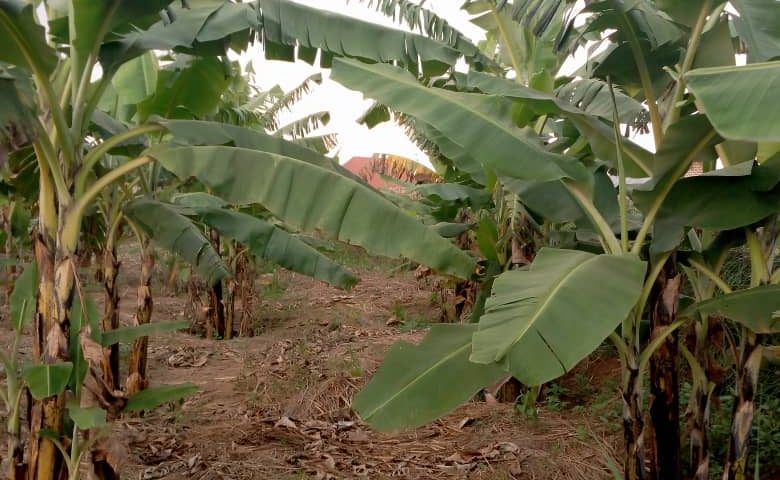Dr. Ivan Kabiita Arinaitwe of Uganda’s National Banana Research Program said that the high- yielding new hybrids were developed through conventional breeding by crossing an East African highland banana cultivar (Triploid 3x) and a male diploid (2x) parent of the wild species Musa acuminata, which contributes the source of resistance to pests and diseases.
The new hybrids are resistant to black Sigatoka (Mycosphaerella fijiensis), a serious plant disease first reported in Tanzania in 1987 and in Uganda in 1990. Black Sigatoka, also known as leaf spot disease, is the most serious constraint to banana production in the Great Lakes region. Recent research indicates the disease causes the premature ripening of the fruit, reducing yields by 76 percent.
In addition to disease-resistance, the new hybrids are better adapted to drought and have more leaf cover. They also increase yields four-fold and taste much like popular local varieties, making them well-suited to long-lasting plantations and improving food security, researchers said.
The achievements realized under the auspices of the Accelerated Breeding Better Banana Initiative (ABBB), the world’s biggest banana breeding program, bode well for the region, which recently approved field trials for genetically modified BXW-resistant bananas.
Kenya’s National Biosafety Authority approved field trials for the BXW-resistant GM bananas at the end of 2017. The Authority’s website indicates that the trials are still ongoing. By all accounts, the development of a GM crop in Kenya takes between 10-12 years from laboratory experiment to full commercialization.
In the context of Uganda and Tanzania, the win-win for smallholder farmers growing banana hybrids developed from conventional breeding and emerging biotechnologies will likely depend on how soon the two countries overcome what regional biotechnology proponents call an ill-advised ambivalence towards modern and invaluable plant breeding tools.
There is optimism that the tide will soon turn in the two countries. In Uganda, plant breeders are already cognizant that conventional breeding cannot be the magic bullet that delivers all the traits needed to ensure the region’s important banana sector survives. They have also banked on genome editing to introduce traits such as pro-vitamin A for improved nutrition value.
While the hang up for GM technology in Uganda has for the most part been on the regulatory side, significant inroads have been made behind the scenes in discussions with important stakeholders on the importance of agriculture biotechnology to the country.
Across the region, several actions have been taken to increase the value of processing raw materials from bananas, including the male bud, pseudo stem and corm, into beverages, bioactive compounds, bio fertilizers, confectionaries, cosmetics and pharmaceuticals.





